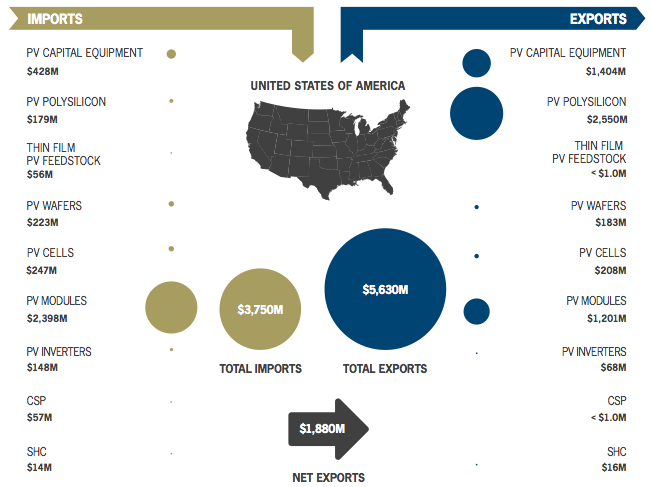Cross-posted from Climate Progress.
What an odd year. While businesses around the world were making record-level investments in renewables and efficiency, a growing number of conservative politicians and members of the American media punditry — lead by the outrageously ignorant “reporting” by Fox News — have been foolishly projecting (even cheering on) the demise of the sector.
Aside from the mind-boggling disparity between the science and politics of climate change, I’ve never seen such a large gap between perception and what’s actually happening on the ground.
Of course, we can’t ignore the enormous challenges — from cheap natural gas to relentless competition in manufacturing — that will lead to the death of many of the companies we know today. That is part of the natural (and sometimes violent) shakeout we can expect to see in years to come.
However, in order to cut through some of the recent political attacks, here are stories on the positive trends in clean energy. These are some of our favorites from the last year (with some of our best clean energy charts of the year):
1. Clean energy stunner: Renewable power tops fossil fuels for the first time.
Even with a severe financial crisis in Europe and the continued malaise in the U.S., renewable energy surpassed fossil fuels for the first time in new power-plant investments in 2011.
2. Solar is ready now: “Ferocious cost reductions” make solar PV competitive.
This great series of charts shows just how cost-competitive solar photovoltaics have become with new coal and nuclear plants in the U.S.

3. Regional greenhouse gas initiative (RGGI) adds 16,000 jobs and $1.6 billion in value to Northeast economies.
While RGGI was being implemented, conservative groups like Americans for Prosperity claimed the regional cap-and-trade program would drive rates up 90 percent. An independent analysis shows that after three years, the program has set a course for $1.2 billion in ratepayer savings.
4. Pension funds and big companies to invest over $1.6 billion in energy efficiency projects.
This year saw a couple record-setting, private-sector investments in efficiency, proving once again that the biggest companies in the world see enormous value in reducing energy.
5. Google map reveals massive geothermal potential nationwide, “effectively an unlimited supply,” says Department of Energy Secretary Steven Chu.
The geothermal industry has had its share of troubles financing and building projects in the last couple of years. But a new Google-funded map shows that technically exploitable geothermal resources in the U.S. are equivalent to 10 times our current coal capacity.

6. Green jobs reach 2.7 million: The “clean economy” starts delivering on its promise of high-wage jobs.
Despite what we hear from politicians who call green jobs “progaganda,” a Brookings Institute report released this summer showed “torrid” growth in high-paying, export-heavy green jobs around the U.S.
7. Google phases out clean energy R&D in favor of deployment, citing the “compelling” cost reductions in solar PV.
With over $915 million in clean energy investments to date, Google is emerging as one of the leading players in renewables and efficiency. In order to make a more immediate impact on the market, the tech giant has switched its focus from R&D to deployment.
8. Solar stunner: America is a $1.9 billion exporter of solar products.
With a high-profile trade war against the Chinese brewing in the solar market, it’s often forgotten that the U.S. is actually a net exporter of solar products to China and the rest of the world. With 73 cents out of every dollar spent on a solar installation staying within the U.S., this sector is providing immense domestic value.

9. What free market? Subsidies have always been a big part of energy industry.
Opponents of strategic government investments in clean energy seem to forget the past. A report on historic government investments showed that the federal commitment to oil and gas was five times greater than the commitment to renewables during the first 15 years of a subsidy’s life.
10. Polling reveals that being anti-clean energy is bad politics.
Anyone watching the presidential primaries has seen an astonishing reversal from candidates on climate science and support of clean energy. It turns out that negative rhetoric can actually have negative consequences for candidates.



